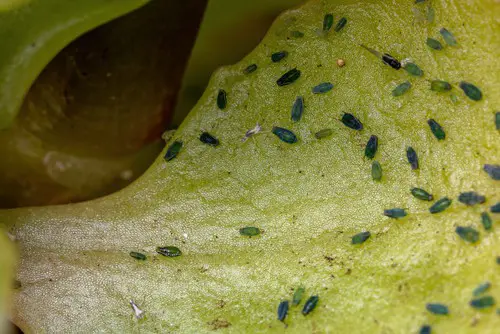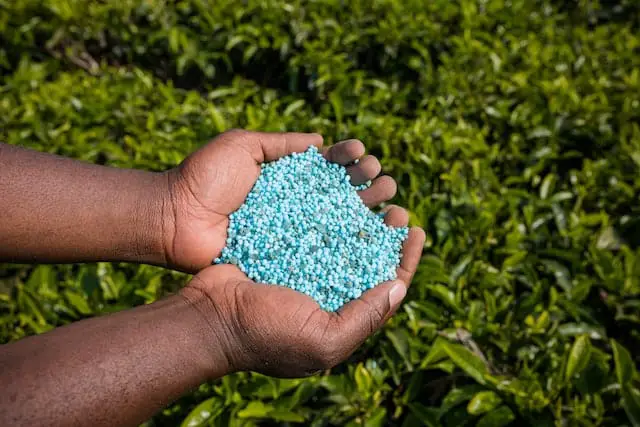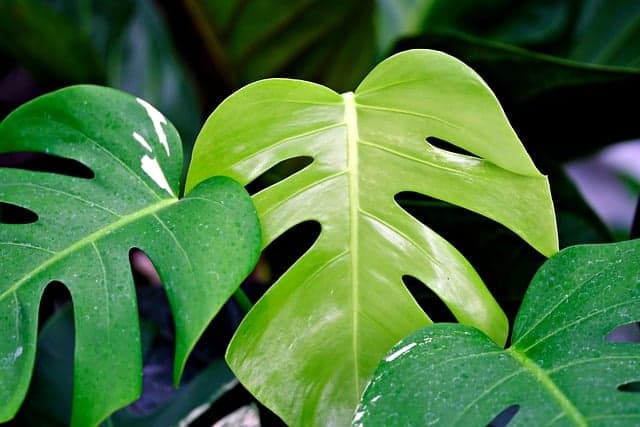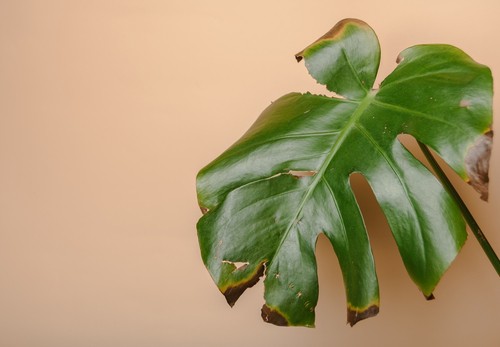Black spots on Monstera leaves can be a cause of concern for plant owners. These spots can be an indication of a variety of issues, ranging from overwatering to pest infestations. It is important to understand the causes of these black spots to prevent them from appearing on your Monstera leaves.
Overwatering is one of the most common causes of black spots on Monstera leaves. When the roots of the plant are overwatered, they can start to rot, which can lead to black spots on the leaves. Other factors such as low humidity, pest infestations, and fungal or bacterial infections can also cause black spots on Monstera foliage.
Preventing black spots on Monstera leaves involves proper care and maintenance of the plant. This includes watering the plant in moderation, ensuring it is not in direct sunlight, increasing humidity levels, and implementing pest control measures.
In cases where black spots have already appeared, treating them involves identifying the underlying cause and taking appropriate action to help the plant recover.
Understanding Black Spots on Monstera Leaves
Monstera leaves are known for their unique and beautiful appearance, but they can also develop black spots, which can be concerning for plant owners. Black spots on Monstera leaves can be caused by various factors, including overwatering, pests, and disease.
Overwatering is one of the most common causes of black spots on Monstera leaves. When the plant is overwatered, it can lead to root rot, which can cause black spots on the leaves. It is important to ensure that the soil is well-draining and that the plant is not watered too frequently.
Pests can also cause black spots on Monstera leaves. Common pests that can damage Monstera leaves include spider mites, mealybugs, and scale insects. These pests can cause black spots on the leaves, as well as other types of damage. It is important to identify and treat pest infestations as soon as possible to prevent further damage to the plant.
Disease can also cause black spots on Monstera leaves. Bacterial and fungal infections can cause black spots on the leaves, as well as other types of damage. It is important to identify and treat these infections as soon as possible to prevent further damage to the plant.
Don’t miss these other popular posts on this category:
Black Spots on Monstera Leaves – 6 Common Problems

Monstera leaves can develop black spots for a variety of reasons, including environmental factors, diseases, pests, and improper care. Here are some of the most common causes of black spots on Monstera leaves:
1. Overwatering
One of the most common causes of black spots on Monstera leaves is overwatering. When the soil remains wet for too long, it can lead to root rot, which can cause the leaves to wilt and develop black or brown spots. It is important to water Monstera plants in moderation and allow the soil to dry out between waterings.
2. Low Humidity
Monstera plants thrive in high humidity environments, and low humidity can cause the leaves to develop black spots. To increase humidity levels, consider using a humidifier or placing a tray of water near the plant.
3. Pest Infestations
Pests such as spider mites, thrips, and scale can infest Monstera plants and cause the leaves to develop black spots. Regularly inspecting the plant and treating any infestations promptly can help prevent black spots from forming.
4. Fungal and Bacterial Infections
Fungal and bacterial infections can also cause black spots on Monstera leaves. These infections can be caused by overwatering, low temperatures, and poor air circulation. Removing any affected leaves and treating the plant with a fungicide or bactericide can help prevent further spread of the infection.
5. Sunburn and Sun Damage
Monstera plants prefer indirect light and can develop black spots if exposed to too much direct sunlight. Sunburn can also cause the leaves to turn yellow and develop brown spots. To prevent sun damage, it is important to place the plant in a location with bright, indirect light and avoid exposing it to direct sunlight.
6. Physical Damage
Physical damage, such as tearing or bruising of the leaves, can also cause black spots to form. To prevent physical damage, avoid placing the plant in areas with high foot traffic or where it may be bumped or knocked over.
Overall, preventing black spots on Monstera leaves requires proper care and attention to the plant’s environment and watering habits. By providing the plant with the right conditions and promptly addressing any issues, plant owners can keep their Monstera plants healthy and free from black spots.
Preventing Black Spots on Monstera Leaves

Monstera plants are popular houseplants known for their beautiful, glossy leaves with unique perforations. Unfortunately, these plants are susceptible to black spots on their leaves, which can be caused by several factors such as overwatering, pests, and diseases. Here are some tips to prevent black spots on Monstera leaves and keep your plant healthy:
Proper Watering
One of the most common causes of black spots on Monstera leaves is overwatering. To prevent this, make sure to water your plant only when the top layer of soil is dry. You can check the soil moisture level by sticking your finger in the soil or using a moisture meter.
It’s also important to ensure that your Monstera has proper drainage and that the pot has drainage holes. Adding a layer of gravel or perlite to the bottom of the pot can also help improve drainage.
Provide Proper Shade
Monstera plants prefer bright, indirect light, but too much direct sunlight can cause their leaves to burn and develop black spots. To prevent this, place your plant near a sheer curtain or in a spot where it can receive bright, indirect light. You can also rotate your plant periodically to ensure that all sides receive equal light exposure.
Pruning
Pruning your Monstera can help prevent black spots by removing any damaged or diseased leaves. Use gardening shears to snip off any affected leaves, and make sure to quarantine the plant to prevent the spread of disease.
Increase Humidity Levels
Monstera plants thrive in high humidity levels, and low humidity can cause their leaves to dry out and develop black spots. You can increase humidity levels by using a humidifier, misting your plant regularly, or placing a tray of water near the plant.
Proper Care
Providing proper care for your Monstera can help prevent black spots and keep your plant healthy. This includes providing proper fertilization, avoiding overwatering and underwatering, and taking precautions to avoid diseases and pests.
Using a ventilator can also help improve air circulation around your plant and reduce the risk of disease and pest infestations.
Treating Black Spots on Monstera Leaves

Black spots on Monstera leaves can be caused by a variety of factors, including overwatering, inadequate fertilization, pests, and diseases. Fortunately, there are several ways to treat black spots on Monstera leaves and prevent them from recurring in the future.
1. Proper Fertilization
One common cause of black spots on Monstera leaves is inadequate fertilization. Monstera plants require regular fertilization to thrive and produce healthy leaves.
To ensure proper fertilization, it is recommended to use a balanced, water-soluble fertilizer every two weeks during the growing season. Be sure to follow the instructions on the fertilizer package carefully to avoid over-fertilizing, which can also cause black spots on the leaves.
2. Indirect Sunlight
Monstera plants require bright, indirect sunlight to grow properly. Direct sunlight can cause the leaves to burn and develop black spots. It is recommended to place the plant near a window that receives bright, indirect sunlight or to use a sheer curtain to filter the sunlight.
3. Misting
Misting the leaves of the Monstera plant can help prevent black spots from forming. Monstera plants prefer humid environments, and misting can help increase the humidity around the plant. Be sure to mist the leaves lightly, as over-misting can lead to fungal growth and other problems.
4. Repotting
If the Monstera plant is root-bound or the soil is depleted, it may be time to repot the plant. Repotting can help provide fresh soil and nutrients to the plant, which can help prevent black spots from forming. Be sure to use a well-draining soil mix and a pot with adequate drainage holes to prevent overwatering.
5. Proper Shade
Monstera plants prefer partial shade to full shade. Direct sunlight can cause the leaves to burn and develop black spots. It is recommended to place the plant in a location that receives bright, indirect sunlight or to use a sheer curtain to filter the sunlight.
6. Aphids
Aphids are a common pest that can cause black spots on Monstera leaves. To prevent aphids from infesting the plant, it is recommended to keep the plant clean and free of debris. If aphids are present, they can be removed by spraying the plant with a mixture of water and dish soap or by using an insecticidal soap..
Frequently Asked Questions

How do you fix black spots on monstera?
To fix black spots on monstera, you need to identify the root cause first. Black spots can be caused by overwatering, low humidity, pest infestations, fungal or bacterial infections, or improper fertilization. Once you have identified the cause, you can take appropriate steps to fix it.
For example, if overwatering is the cause, reduce the frequency of watering and make sure the soil is well-draining. If low humidity is the issue, increase the humidity levels around the plant by misting it regularly or using a humidifier.
Why do my monstera leaves have black spots?
Monstera leaves can have black spots due to various reasons such as overwatering, low humidity, pest infestations, fungal or bacterial infections, or improper fertilization. Identifying the root cause is important to fix the issue.
Why is my monstera getting dark brown spots?
Dark brown spots on monstera leaves can be a sign of fungal or bacterial infections. These infections can spread quickly and cause serious damage to the plant if left untreated. It is important to remove the affected leaves and treat the plant with a fungicide or bactericide to prevent the spread of the infection.
How do you treat monstera leaf spots?
The treatment for monstera leaf spots depends on the cause of the spots. If the spots are due to overwatering or low humidity, adjust the watering and humidity levels accordingly. If the spots are due to pest infestations, use an appropriate insecticide or pesticide. If the spots are due to fungal or bacterial infections, use a fungicide or bactericide.
What causes black spots on monstera leaves?
Black spots on monstera leaves can be caused by overwatering, low humidity, pest infestations, fungal or bacterial infections, or improper fertilization. Identifying the root cause is important to fix the issue.
How do you prevent black spots on monstera leaves?
To prevent black spots on monstera leaves, make sure the plant is not overwatered and the soil is well-draining. Maintain the humidity levels around the plant by misting it regularly or using a humidifier. Keep the plant free from pest infestations by inspecting it regularly and using insecticides or pesticides as needed. Use a balanced fertilizer and avoid over-fertilizing the plant.

Hey, I’m Lisa and I’ve been an avid gardener for over 30 years. I love writing, talking and living in the garden! Feel free to connect with me on my socials below

